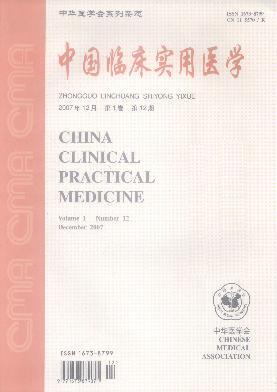Mechanism study of glucose transport by recombinant human brain natriuretic peptide pretreating myocardial cells in rats with hypoxia/reoxygenation
引用次数: 0
Abstract
Objective To investigate the mechanism of glucose transport by recombinant human brain natriuretic peptide(rh-BNP) pretreating myocardial cells in rats with hypoxia/reoxygenation. Methods Left ventricular cardiomyocytes were obtained from SD rats aged 6~8 weeks and were cultured in vitro.They were divided randomly into 5 groups including the control group, hypoxia group, hypoxia/reoxygenation group, rh-BNP pretreating hypoxia group and rh-BNP pretreating hypoxia/reoxygenation group.MTT assay was used to detect the changes of cells viability.The levels of lactate dehydrogenase(LDH), glutathione, superoxide dismutase(SOD) and BNP were measured by ELISA.The expression of iNOS, eNOS, GLUT1 and GLUT4 were detected by RT-PCR. Results The rh-BNP intervention significantly increased the viability of hypoxia and hypoxia/reoxygenation treated cardiomyocytes(P<0.05), reduced the levels of LDH, glutathione, SOD and BNP induced by hypoxia and hypoxia/reoxygenation(P<0.05), and increased the mRNA expression of iNOS, eNOS, GLUT1 and GLUT4 in cardiomyocytes(P<0.05). Conclusion The rh-BNP alleviates hypoxia/reoxygenation-induced cardiomyocytes injury by affecting oxidative stress and the expression of GLUT1 and GLUT4. Key words: Recombinant human brain natriuretic peptide; Hypoxia/Reoxygenation; Glucose transporter; Oxidative stress重组人脑利钠肽预处理缺氧/复氧大鼠心肌细胞对葡萄糖转运的机制研究
目的探讨重组人脑钠肽(rh-BNP)预处理大鼠缺氧/复氧心肌细胞的葡萄糖转运机制。方法取6~8周龄SD大鼠左心室心肌细胞进行体外培养。将其随机分为5组,分别为对照组、缺氧组、缺氧/复氧组、rh-BNP预处理缺氧组和rh-BNP前处理缺氧/复氧化组。MTT法检测细胞活力的变化。ELISA法检测血清乳酸脱氢酶(LDH)、谷胱甘肽、超氧化物歧化酶(SOD)和BNP水平,RT-PCR法检测iNOS、eNOS、GLUT1和GLUT4的表达。结果rh-BNP干预显著提高缺氧和缺氧/复氧处理心肌细胞的活力(P<0.05),降低缺氧和缺氧-复氧诱导的LDH、谷胱甘肽、SOD和BNP水平(P<0.05),结论rh-BNP通过影响氧化应激和GLUT1、GLUT4的表达,减轻缺氧/复氧诱导的心肌细胞损伤。关键词:重组人脑钠肽;缺氧/再氧合;葡萄糖转运蛋白;氧化应激
本文章由计算机程序翻译,如有差异,请以英文原文为准。
求助全文
约1分钟内获得全文
求助全文

 求助内容:
求助内容: 应助结果提醒方式:
应助结果提醒方式:


